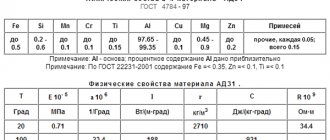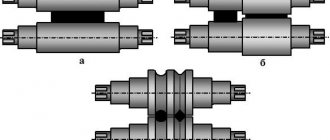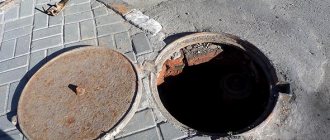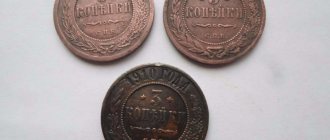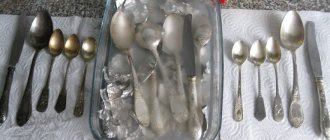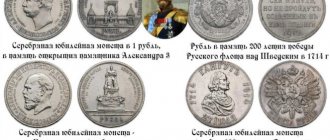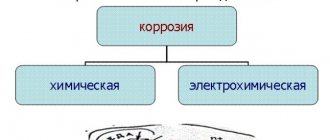Why copper products need to be cleaned regularly
The process of blackening metal is a natural process. When copper products come into contact with moist air, they form a film on the surface. It can be easily removed with improvised means or industrial mixtures, but over time it appears again, so cleaning copper must be done constantly.
Metal oxidation
Copper can be oxidized during chemical reactions. In its pure form, it is a metal with a characteristic reddish luster. In open air, the element forms a compound with oxygen and changes its color. First, films or deposits on copper acquire a purple tint with a red tint. This indicates the formation of the first stage of oxidation. The product then turns black when reacted with oxygen again.
Plaque on a copper product
A green coating on copper appears after the metal has been in a humid environment for a long time. This is a hydroxyl film. The compound is poisonous to the human body, therefore it is strictly forbidden to eat from dishes covered with such a coating.
In addition, whitish, yellow or black spots may form.
Effective cleaning methods
You can clean copper in any available way, but before choosing a method, you should determine whether the color change occurred due to a chemical oxidation reaction or whether the varnish coating on the product has simply darkened. To conduct the experiment, just mix baking soda and vinegar 9% in a 1:1 ratio and apply the mixture to the dishes.
If a reddish surface begins to appear under a thick layer of plaque, it means the metal has oxidized. Here industrial products or folk remedies that can be easily made at home will come to the rescue.
If there are no changes, this indicates darkening of the varnish. To restore the natural shine of a copper product, just wash it with warm soapy water.
Cleaning copper from white deposits
White spots are formed from the same oxidation. The formation of a whitish patina is associated with other metals contained in the copper alloy. There are several options for cleaning copper from such plaque:
- Chalk, ammonia. To prepare the paste you need to take 2.5 tbsp. l. 25% ammonia solution, 1 tbsp. l. crushed chalk and 5 tbsp. l. water. Then you should apply the mixture to the object, hold it for a while, wipe with a small sponge and rinse with running water.
- Vinegar, salt (for a thick layer of plaque). First, the product should be washed with any dish soap and dried. Pour 9% vinegar over the surface with whitish spots and sprinkle with fine salt on top. Leave for 5-10 minutes. Then wipe with a soft cloth and rinse.
- Ketchup. Apply the product to the product, brush with an old toothbrush and wash.
How to clean copper from black and green deposits
Ammonia will help remove blackness from copper. Soak a cotton cloth in the liquid and gently wipe the surface of the product. Use a clean rag to remove any remaining ammonia.
A mixture of turpentine, oxalic acid and vodka in equal proportions will remove toxic green deposits on the surface of copper products. The product is applied to the product, then the remaining solution is removed.
Cleaning copper from rust
Cleaning of copper products is carried out using aggressive acids. You should work with gloves and in a room with good ventilation. Hydrochloric or other acid is applied to a small piece of material. The product is thoroughly wiped, then rinsed in running water.
Answers to the scanword of the day from Odnoklassniki number 22527
22526 22528
- Made the film "Snatch" with 4 letters: RICHIE
- Konstantin Kinchev from 5 letters: ALICE
- He and she together from 3 letters: THEY
- Castle in Strasbourg with 4 letters: ROAN
- A lion. Podkamennaya Tunguska tributary of 4 letters: KAMO
- Region around Florence with 7 letters: TUSCANY
- Buffalo from Indonesia with 4 letters: ANOA
- Giant in Mari tales with 4 letters: ONAR
- in the photo there are 5 letters: GARNA
- The “basis” of a 4-letter cake: KORZH
- in the photo from 6 letters: KARATE
- Harlot of Jericho with 4 letters: RAHAB
- Queen of showbiz's 4-letter name: ALLA
- Finnish architect with 5 letters: AALTO
- Capital city of the Turks with 6 letters: ANKARA
- Biocopy of 4 letters: CLONE
- 3 letter anagram for the word “noo”: IT
- English philosopher with 4 letters: LOCKE
- 5 letter bucket coating: ENAMEL
- One of the elementary particles with 4 letters: MUON
- Saw-bellied herring from 7 letters: PELLONA
- Linen fabric for 3 letter yarn: LUB
- Knight's 4-letter battle armor: ARMOR
- Sports commentator with 5 letters: ORLOV
- in the photo from 4 letters: WINE
- The name of the singer Bregvadze from 4 letters: NANI
- “... or Yamskaya” from 6 letters: DIBUNS
- Magellan's 6 letter name: FERNAN
- Poetic “couplet” of 6 letters: STROPHE
- in the photo there are 6 letters: PROJECTILE
- Bulat Shalvovich from 8 letters: OKUDZHAVA
- Southern fruit tree with 5 letters: ANON
- Labor forehead moisturizer of 3 letters: SWEAT
- God on the throne of Tutankhamun from 4 letters: ATON
- Irish musician with 4 letters: BONO
comments, questions and answers to the crossword puzzle of the day:
CORZH m. 1. Large flatbread (usually made from unleavened dough). 2. This flatbread is like an integral part of the cake.
KARATE avg. several 1. Japanese system of self-defense without weapons, based on punching or kicking the most sensitive areas of the enemy’s body. 2. One of the types of wrestling, based on the Japanese system of self-defense without weapons.
CLONE m. 1. Genetically homogeneous offspring formed as a result of asexual reproduction (in biology). 2. Same as: cloning.
ENAMEL [1] g. 1. An opaque glassy mass used to coat metal objects to protect them from oxidation. // A layer of such a substance covering something. 2. The surface is made of an opaque glassy mass. 3. Thick paint, ground with special varnishes, which after drying gives an even and durable color to the object.
ENAMEL [2] g. 1. Glaze for coating art products. 2. decomposition Art products covered with such a mass.
ENAMEL [3] g. 1. Modified epithelial tissue, hard and shiny, covering the outer part of the tooth.
LUB m. 1. Internal fibrous part of the bark of woody and herbaceous plants. 2. A fresh layer of tree bark, separated directly from the trunk; bast. 3. Fibers of hemp, flax, nettle, etc., used for making yarn.
ARTS pl. Armor in the form of metal armor to protect the chest and back of a warrior from defeat in ancient times - with edged weapons, and in the Middle Ages - with firearms.
WINE avg. 1. An alcoholic drink, usually obtained from the fermentation of grape juice. 2. up-down Vodka or other alcoholic drinks.
NANI [1] pl. The self-name of the Oroks living in the eastern and partially southern parts of Sakhalin Island.
NANI [2] pl. The self-name of the Orochi living in the Khabarovsk region of Russia.
STROPHE w. A part of the text in a poetic work, characterized by a repeating organization of rhythm and rhyme and meaningfully uniting several verses.
PROJECTILE [1] m. 1. A type of ammunition for firing from guns.
PROJECTILE [2] m. 1. Tool, device for smb. work, classes, etc. 2. A technical device, apparatus, mechanism for the production of something. works, scientific research, etc. 3. Device, device for sports exercises.
SWEAT m. 1. Liquid secreted by sweat glands. // Selection of such liquid; sweating. // transfer decomposition A damp coating on smb. surfaces. 2. transfer decomposition Great physical or mental stress that accompanies smb. labor or some kind activities.
Mechanical cleaning of copper products
Over time, a layer of dirt forms on the surface of the metal. In this case, mechanical cleaning of copper products is used. Most often, the problem occurs with jewelry and other items with raised images.
To carry out the manipulation, you should stock up on a sewing needle, brush or cutters. Any of these devices will effectively remove dirt on the convex surface and between the cracks.
To begin with, keep the bracelet, cross or earrings in distilled water for 40-50 minutes. Soaking will allow you to easily remove the whitish coating. Then, using one of the cleaning tools, the dirt is gently removed. To avoid damaging the surface of the jewelry, it is recommended to first apply synthetic resin to its surface.
Mechanical cleaning of copper utensils can be done using baking soda or salt. Any of these products is applied to the surface with a soft sponge and rubbed with little effort.
Paste GOI
Goi paste is light green or malachite bars containing chromium oxide. This is an abrasive substance that has found its application in grinding steel and non-ferrous metals.
Copper cleaning paste is dissolved in machine oil, and the product is wiped with a flannel cloth. A brush cannot be used with this processing method, because After this, the product cannot be restored. Numismatists do not recommend using this paste when cleaning antique coins.
Effectively cleaning copper coins
Previously, small coins were made from a copper alloy. Today they are considered a rarity. Since a film often forms on the surface of coins, this reduces their value. To remove oxidation and return items to their original appearance, antique dealers use industrial cleaning products. With their help, you can not only return coins to their original condition, but also clean a copper pot or an antique basin.
Ways to clean copper at home:
- A pronounced yellow coating on coins indicates contact of the products with a lead surface. Such items can be treated with acetic acid solution.
- Citric acid powder will help remove the bright green film.
- Remove red deposits with a liquid containing ammonia.
Before cleaning a copper basin, dishes or coins that are considered rare, you need to study the recommended treatment time and the amount of active substance. If you overexpose a copper object in Trilon, acid, or rub it with sulfur ointment in excess, you can ruin antique items.
Boiling coins in soda solution
Baking soda and copper interact effectively with each other, returning the shine to metal products. To prepare the solution, take 1 liter of water and 10 tbsp. l. baking soda. You will also need a small saucepan and an old toothbrush.
The solution should be poured into a container and the products should be lowered into it. They should be covered with at least 2 cm of the solution. Place the pan on the fire and boil the contents for 20-30 minutes. Then you need to let the coins cool. Already cold products are treated with a toothbrush, removing remaining dirt.
Trilon B
Trilon B is another option for processing copper at home. This is a ready-made chemical mixture that is sold in jewelry stores. It is designed specifically for copper surfaces, does not destroy the metal, like some acids, and carefully cleans it of oxide.
Metal products are placed directly into a jar of the substance using plastic tweezers for 10-20 minutes. Then they are taken out and washed. If the oxide layer is too thick, the procedure will have to be repeated several times.
Kefir, vegetable oil
Kefir contains non-aggressive acids that gently clean the copper surface, leaving a light patina. To carry out the manipulation, all items should be placed in glass containers and filled with fermented milk product. Keep copper products in kefir for 50-60 minutes. Then you need to take them out, wash them under running water and dry them.
When using vegetable oil, you need to additionally take dishwashing detergent, a deep saucepan and plastic tweezers. Pour sunflower or olive oil up to 2 cm high into the bottom of the container and boil. Using tweezers, lower the coins into the pan and keep them on the fire for 10-20 minutes. Then remove the copper products, rinse with dishwashing detergent, wipe and dry.
Citric acid, vinegar
Dark stains on ancient coins can be easily removed with vinegar. First, prepare a solution with 0.5 liters of water, 1.5 tbsp. l. 9% vinegar and 1.5 tbsp. l. rock salt. Copper objects are dipped into the liquid and sent to the fire. It is advisable to boil the coins for 5-10 minutes, then remove them, rinse and wipe dry with cotton cloth.
If desired, vinegar can be replaced with citric acid or freshly squeezed juice. If lemon is used, the fruit should be cut in half and the pulp should be rubbed onto the copperware. Leave them in this state for 10-15 minutes, then rinse under running water.
OXIDATION AND PATINA
OXIDATION AND PATINA
Patina is an olive-colored oxide-carbonate film (patina) that forms on the surface of old objects made of copper or its alloys under the influence of the environment. Patina can be natural or artificial. The presence of such a coating gives the coin a special beauty and makes it more expensive. The appearance and color of a coin can change as a result of chemical processes that occur over a long period of time. Such changes are often caused by natural causes, such as age and wear and tear of the coin caused by frequent use.
Most often, metals undergo oxidation. This is a chemical process in which a metal combines with oxygen to form oxides. The changes in an individual coin depend on the reaction of each of the metals and alloys when exposed to oxygen. If, for example, platinum and gold are practically invulnerable in this sense, then iron very poorly tolerates moisture in combination with oxygen, which is why rust forms.
It is known that copper and bronze have been used for minting coins since ancient times. These materials are not particularly stable and therefore change over time. Thus, under the influence of humidity, carbon dioxide and oxygen, a copper coin darkens within a few weeks after it is released into circulation. In addition, there is the so-called bronze disease, or verdigris.
Natural patina is a positive characteristic of a coin; it is highly valued among numismatists. Patina not only beautifies a coin, but also provides insight into its past.
DID YOU KNOW THAT... Smoky patina (blue-gray) is a rare type of patina caused by volcanic smoke. This patina makes the relief of the coin clearer and doubles its price.
NATURAL PATINA Natural patina is a coating on the surface of copper or bronze (copper-based alloy) that forms during the natural corrosion of the metal. Of all the chemical tests that copper and bronze undergo, the patina is the most noticeable. This emerald green film forms on coins over time: many years, or even centuries, after they were issued and began to interact with the environment. It should be noted that patina becomes a kind of natural barrier that protects the coin from further adverse effects. This plaque, in fact, is a protective film, which, firstly, indicates the authenticity of the coin, and secondly, protects the metal from corrosion. Also, the presence of patina indicates that no manipulations were made on the coin and no attempts were made to clean it, thanks to which it was able to retain its original appearance. But if the plaque is removed, the surface of the coin will oxidize again, and in this case some loss of metal is inevitable. Patina, which forms naturally, has a specific color. And although throughout the history of money they have tried to counterfeit it more than once, it is impossible to obtain artificially the same coating that appears in natural conditions. The marks left on coins over centuries are natural works of art. It is unique and cannot be faked. Nevertheless, there were master counterfeiters who tried to do this. For example, Karl Wilhelm Becker (1772-1830) is perhaps the largest counterfeiter of all time. He used very difficult and unusual methods. So, to fake the patina, Becker buried the coins in the ground for several weeks, and then dipped them in urine. Trying to achieve the desired shade of fake patina, he used different urine - men or women drinking beer or wine, depending on the desired result. Now the patina crystals can be examined using a microscope, and it is the presence of these crystals that indicates that the plaque is natural.
Experts consider patina as a protective film that preserves the authenticity of coins and also provides a guarantee that they have not been manipulated in any way.
ARTIFICIAL PATINA For thousands of years, patination techniques have been used on copper and bronze objects to achieve specific effects. To create an artificial patina, special substances are applied to objects, usually containing some acids and oxidizing agents. This patina can be transparent or matte; it helps protect the metal from fading and corrosion. During the Renaissance, with the help of artificial patination, monuments and sculptures aged and gave them grandeur. Traditionally, sculptures were covered with a brown or green patina, creating the effect of the copper naturally changing with the environment.
PATIN COLOR In the world of numismatics, it has always been believed that patina gives a coin its special beauty and helps trace its history. Because patina appears over time and under certain conditions, it can sometimes indicate what has happened to the coin over the years. The color of the patina depends on the metal or alloy the coin is made of, as well as the climatic conditions of the area where it was placed. For example, a green patina appears on coins that have come into contact with salt water, or have been lying on the seabed, or have been near the sea, and then the salt water may have reached them in the form of condensed droplets in the air. Also, metals that are exposed to Yari acquire a green color. The patina can also be brown if the bronze comes into contact with the ground - this is how copper oxide is formed. This type of plaque occurs most quickly and can have different shades: from pinkish and reddish to purple. Copper (I) oxide quickly turns into copper (II) oxide - tenorite, and then the brown color turns almost black. Almost all ancient bronze coins are coated with brown copper oxide. But copper sulfate and copper sulfide give coins a color ranging from green to blue or turquoise. Such coins are also called “greenbacks”. At the same time, copper carbonate gives the patina an emerald green (malachite) or blue (lapis lazuli) color. By the color of the patina, you can determine where the coin was and what events it experienced, that is, find out its history, which cannot be found out in any other way. One illustrative example is fires. By the appearance of the patina, you can determine whether the coin was close to the fire or, conversely, far away. Moreover, if she was in a fire, then you can even establish what kind of fire it was and whether the fire was quickly extinguished with water or smoldered for a long time. And although the patina on bronze is better known, silver also develops a patina over time and changes its appearance due to weathering and contact of the metal with other substances. The patina color of silver can vary from yellowish to gray or brown to purple.
BRONZE DISEASE patina or verdigris. This is an unstable and destructive patina caused by acetate | copper, which attacks bronze objects and results in pale green or blue-green stains. Bronze disease is also provoked by the presence of chloride salts, atacamite and para-atacamite on the surface of coins, sculptures and other objects that contain both copper and bronze. A “diseased” coin will corrode and eventually break.
COMMERCIAL VALUE In the numismatic world, patina has its own canons of beauty, which depend on the brightness of the colors, as well as the clarity of the image on the coin. Some patina colors are more valuable on the market than others. At the same time, it is important to store coins in optimal conditions, which will help preserve the design and, therefore, increase the value of the numismatic object. A beautiful patina indicates that the coin has been stored correctly. If the print on the coin is damaged by patina, then its price will be less. It’s interesting that black patina usually spoils the image, but smoky patina, on the contrary, makes it more prominent. In addition, coins on which the patina is evenly distributed are more valuable, and, accordingly, those on which the patina appears in spots or stripes are less valuable. Experienced numismatists believe that patina is the soul of a coin.
Not all patina colors are equally valued by collectors. The value of a coin on the market can be quite high if numismatists find its patina particularly beautiful. The patina that makes the image on the coin more prominent, as well as the one that lies evenly, is valued higher.
TYPES OF PATINA Copper, bronze and brass are covered with a characteristic patina:
— A stable patina usually appears on bronze statues and represents a kind of protective film. In most cases, it is considered to decorate the object.
— An unstable patina is formed under the influence of chlorides, which, when reacting with oxygen and water, form hydrochloric acid. This patina is destructive. This type also includes bronze disease, which completely destroys the coin.
— Artificial patina is created using certain chemicals. Thousands of years ago, people learned to fake patina. During the Renaissance, patina was especially popular: it was applied to monuments and other cultural objects to create the effect of antiquity.
